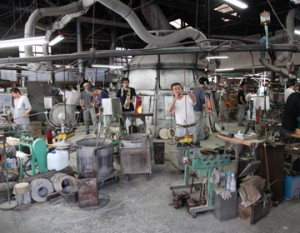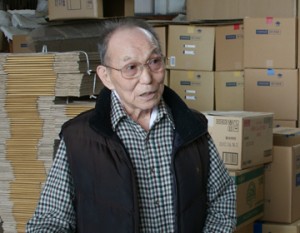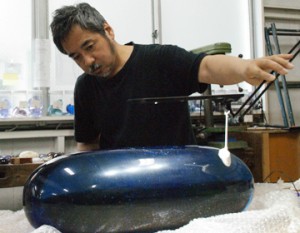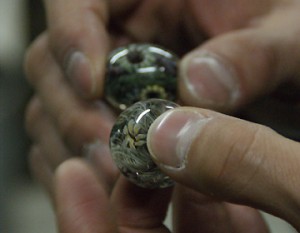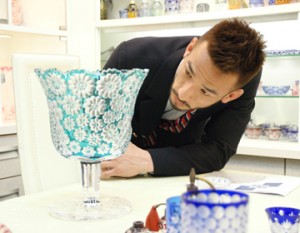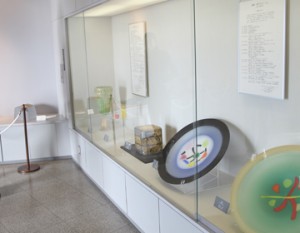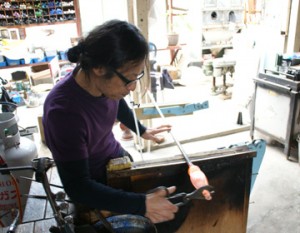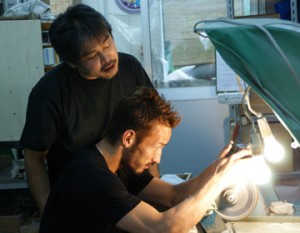Attention to detail
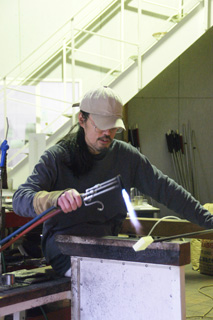
The most important characteristics of works by Umakoshi is his ”attention to detail.” Not only the color and shape, but also the surface. He used to make large pieces in the past, but currently he works on mostly vases and perfume bottles. From the surface, interior, to all the details, every aspect is delicately beautiful. Observing the process of glasswork being created in his studio, you can see the vast potential of glasswork as a form of expression.
Umakoshi’s delicate style involves a technique called ”coldwork.” It is a technique which involves cutting hardened glass. The basic shape is made by ”hot work”, or blowing glass, then after the glass cools down, the glass is cut to make it his own.
A granular abrasion agent is applied to the glass using a sandblaster. ”I never knew you could shave glass with sand. Glass is more fragile than I thought,” Nakata commented as he watched the process of glass being cut and shaved. The surface has a gradational quality unlike ”Kiriko” or surface polishing. Umagoshi determines the slight changes, and slowly transforms the shape of the glasswork.
The importance of unintentional results
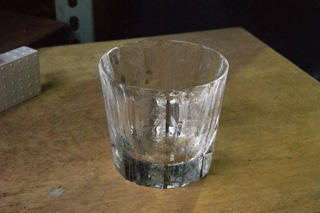
The characteristic of Umakoshi’s works appear on the texture of the surface. Nakata took notice of a piece with a rough surface like frost. The surface was created by a technique called ”glue chip”. The bumps and grooves were not carved by hand but are small cracks made accidentally on the surface. The ”glue” in ”glue chip” is animal glue. The base underneath is sandblasted then animal glue is applied to the surface.
”The glue shrinks as it dries. When it reaches its limit, the glue splits, and a part of the glass pops off with the glue. It can’t be controlled. The unevenness is made naturally.”
” I think I’ve seen this in glass windows overseas.”
”Yes, this technique was originally applied on plate glass. I decided to try it on three-dimensional objects.”
Appearance of texture
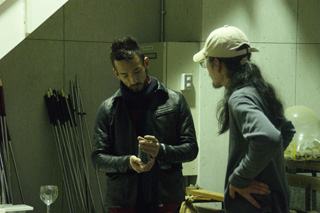
Umakoshi also applies enamel when coloring his pieces. He applies the enamel then gilds it at a high temperature. White enamel becomes slightly opaque but sheen, giving the piece a unique expression.
As he filled in enamel into a straight groove carved onto the surface, we began talking about glass and light.
”Glass pieces change appearance depending on the lighting, don’t they?” Nakata asked. ”Yes, you can say that when you are looking at glasswork you are looking at the light.” responded Umakoshi. Umakoshi’s pieces feature texture on the surface, and beautiful shapes. The texture intensifies with lighting, and different expressions appear. He accepts the changes appearing on glass, and applies what he discovers to creating new pieces.




